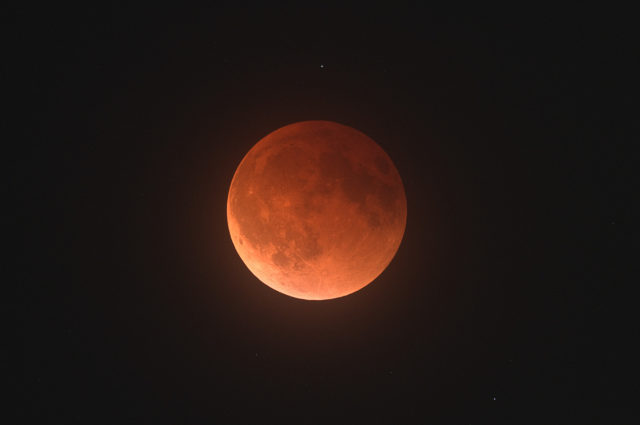
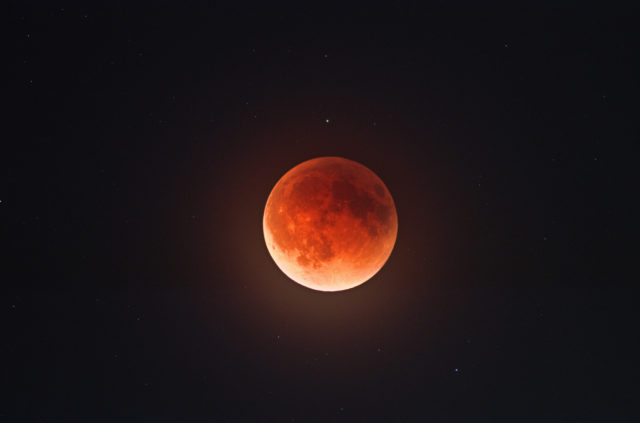
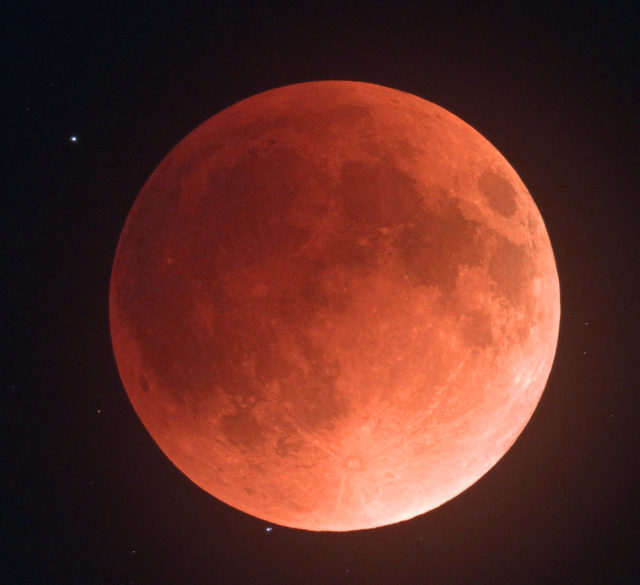
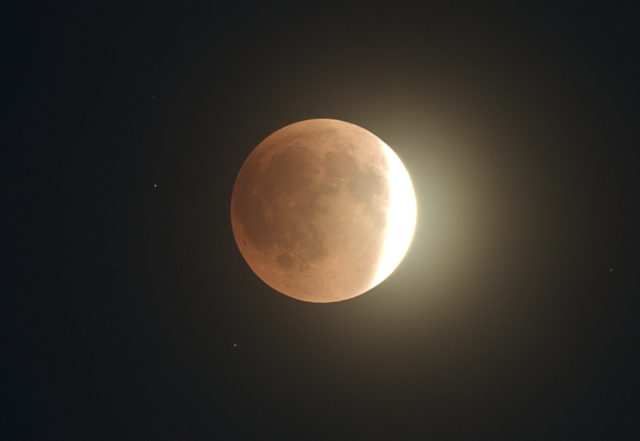
Clear to partly cloudy skies and a little humid, but good enough to get shots of most of the eclipse. The four images above were some of the better captures.




Clear to partly cloudy skies and a little humid, but good enough to get shots of most of the eclipse. The four images above were some of the better captures.
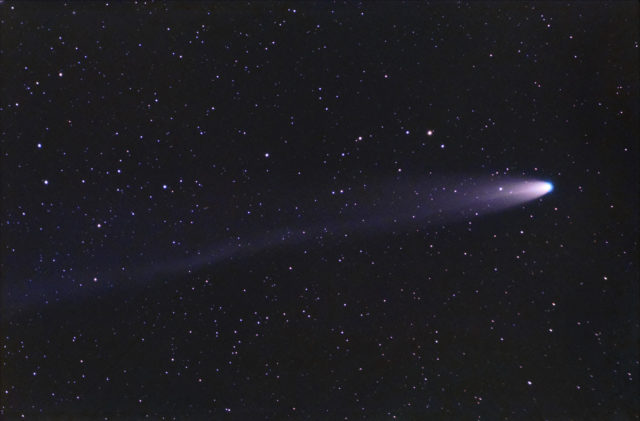
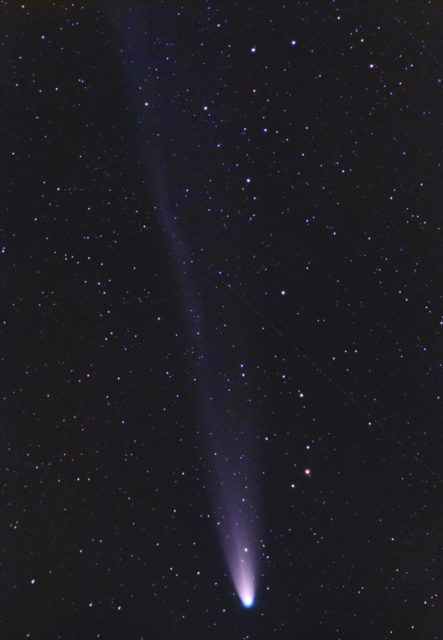
I managed to get some images of Comet Leonard (C/2021 A1) despite it being just under 7 degrees above the horizon at the start of the sequence. Twilight, haze layers, clouds, air traffic, light pollution and atmospheric turbulence were some of the obstacles I had to overcome. Oh, and huge flocks of geese were flying through the field, too! lol
Luckily, the comet was not moving much relative to the stars, so the processing was not too difficult. Exposure was 9×120 seconds. I took 24 shots, but many were in strong twilight or had multiple jets crisscrossing over the comet and ruining the view. Some were when the comet was below 4 degrees and the guiding was horrible due to turbulence.
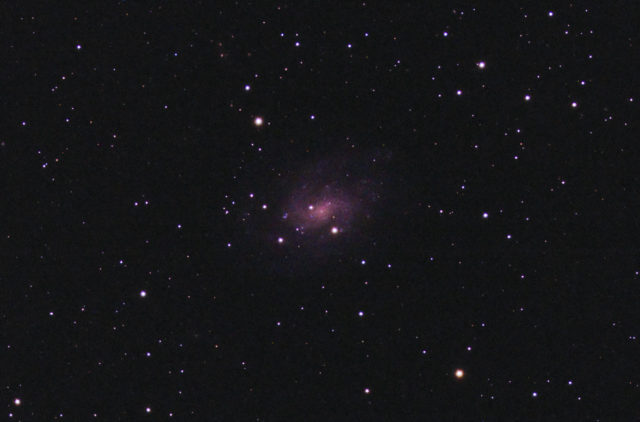
Another galaxy with short exposure time. This one was only 22 degrees above the southern horizon at the Bortle 4 site south of Perry, LA. I had to boost the saturation quite a bit to get it this colorful, since the sub count was low. But, at least it was buried in there and not all zapped out like when I have to remove lots of LP.
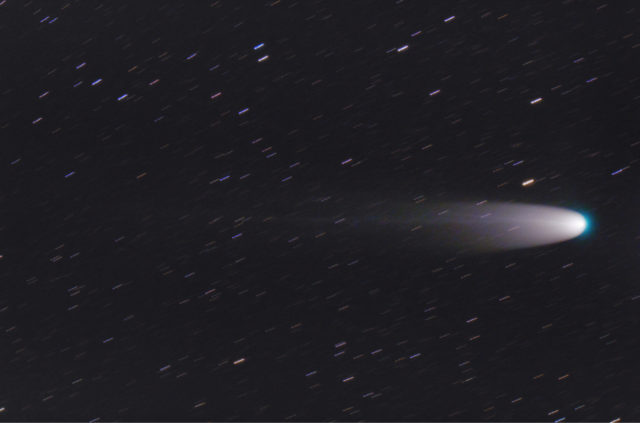
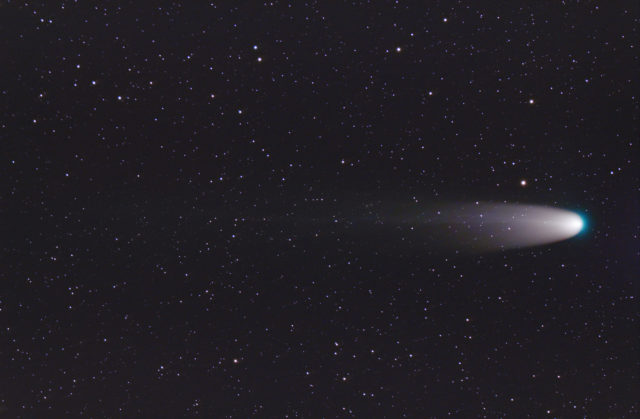
My, my… what a difference a day makes.
I was hoping Comet Leonard (C/2021 A1) would keep the show going, but it looks like the outburst it had for the past few days is over with, at least for the time being.
After Comet Leonard set, I was interested how another comet nearby would look, so shot 21 minutes worth of subs to take a peek:
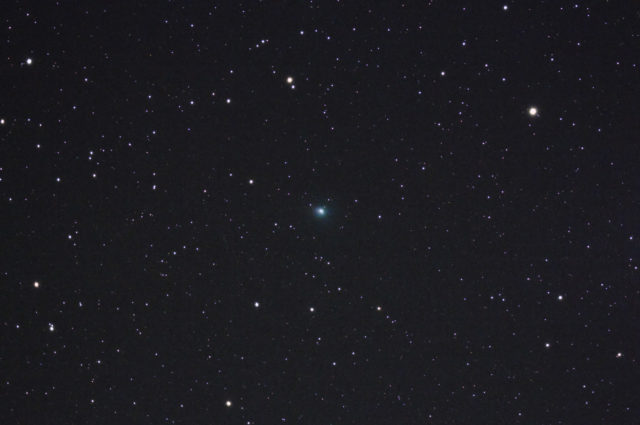
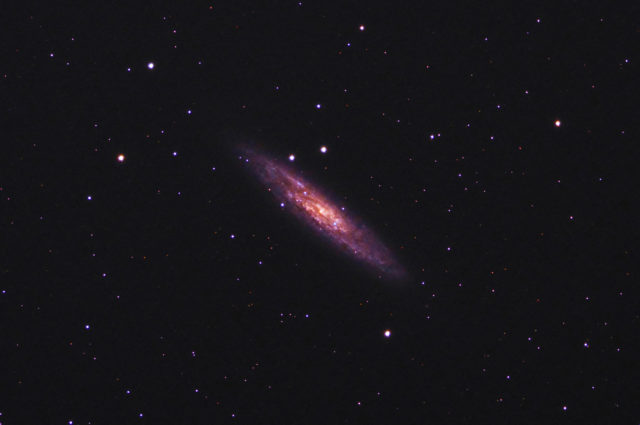
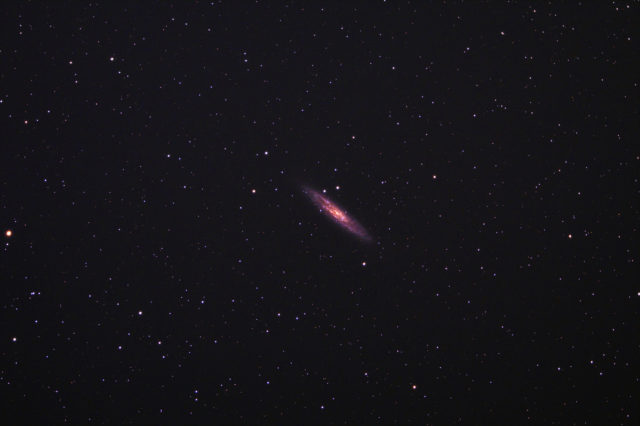
It surprised me how well this came out with only 3 sub-images. I was at the observing site south of Perry, LA where it is a Bortle 4/4.5 zone, which helped quite a bit. It was the first time I have used my QHY183c astro camera with just a clear UV/IR filter, which showed me how sensitive and noise-free this camera really is.
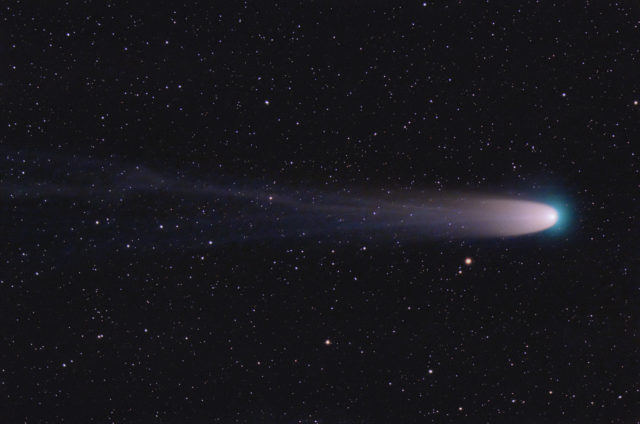
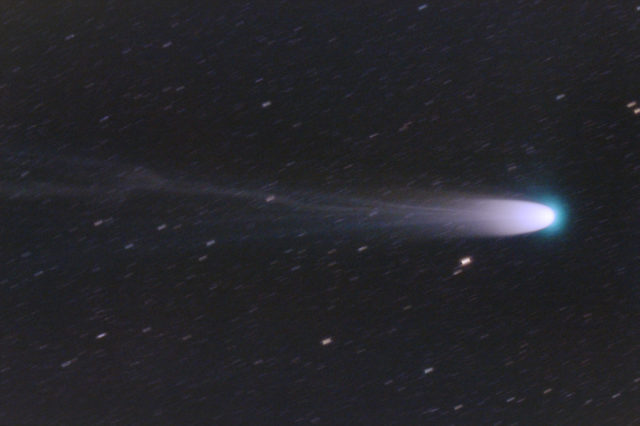
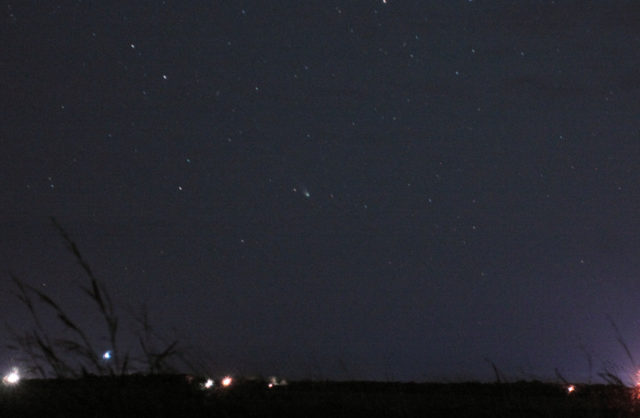
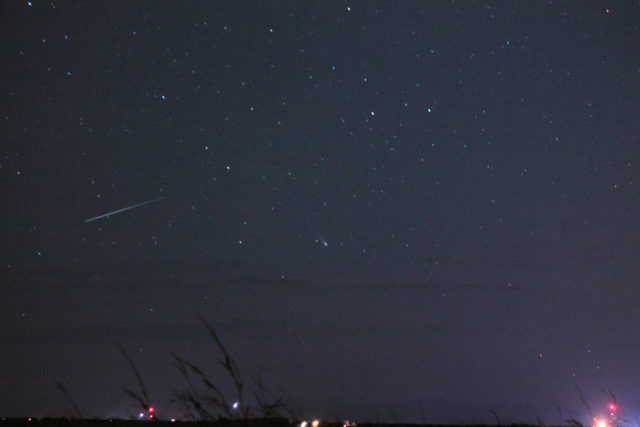
Finally got some clear weather to image Comet Leonard again. It had been 20 days of clouds and poor conditions. A day or two before this night, it was announced that the comet was in outburst and had gotten significantly brighter. I was lucky to have the weather clear up just in time for me to catch it while it was still in outburst and displaying a dazzling tail!
Oh, here’s further work I did with those 15sec tripod mounted shots below. I was able to get 9 of the better ones to stack in IRIS and created this image showing the tail length better.
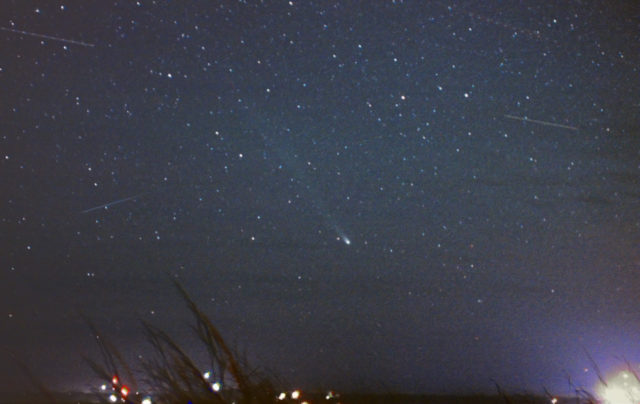
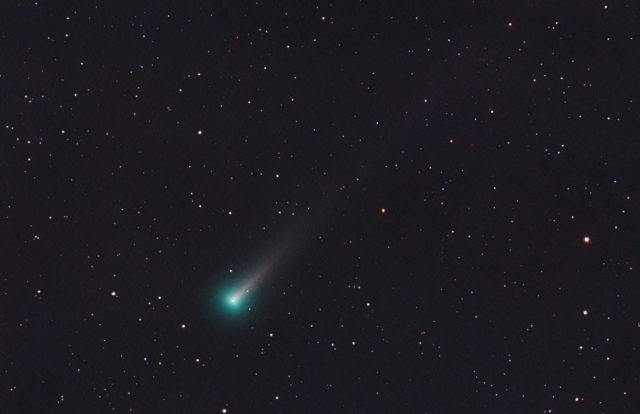
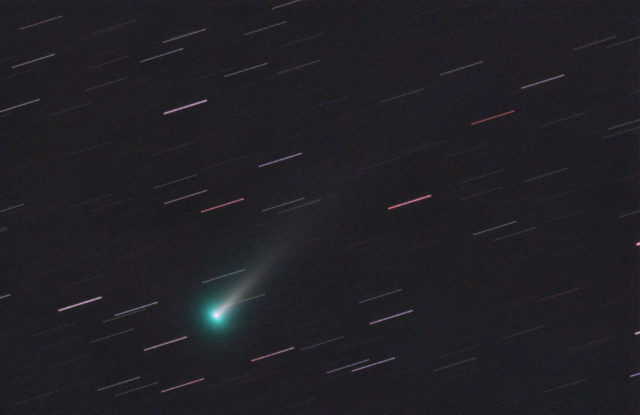
Comet Leonard is getting bigger and brighter. First clear weather since the lunar eclipse allowed me to get some new data on this guy.
I made a quick comparison image to show the size of the comet compared to the moon (simulated):
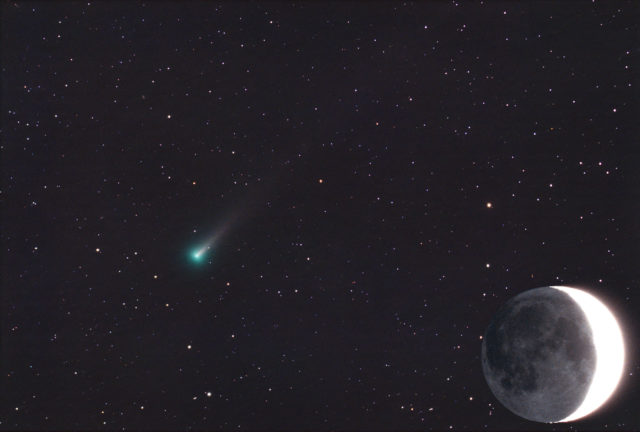
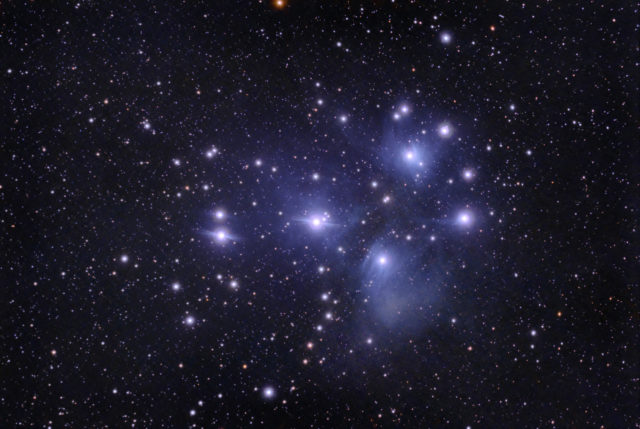
RegiStar let me combine two shots, one from Nov 2021 and one from Jan 2021, both taken with my QHY183c camera, but with two different telescopes. Both were from the same location – a very light polluted metro area, using a Baader UHC-S L-Booster filter.
I am pleased that the UHC-S filter has this much response to blue reflection nebula while keeping out the enormous amount of LP that I have to shoot through here in the city.
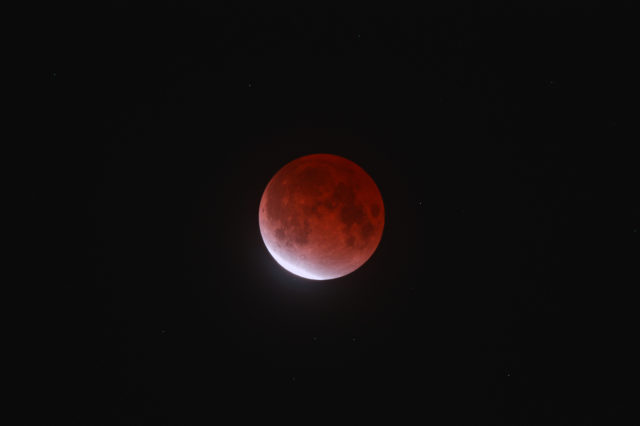
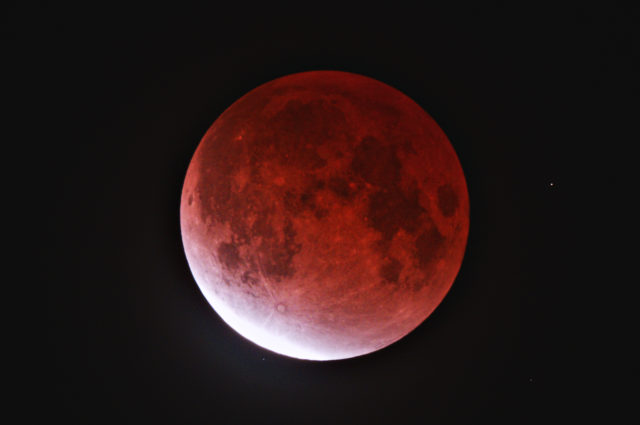
The lunar eclipse of Nov 19, 2019 was pretty good, considering it was only partial. I started imaging at 1:00 and didn’t stop until dawn. The two best images are above. The sequence below is exactly how they came out live in the field, so to speak.
BONUS:
Two comets, C/2021 A1 and 67P, just a quick look to see their progress from the last time. 67P appears to have faded a little and C/2021 A1 has gotten brighter.